The pro mountain bike race season is officially open.
Monterey, California’s Sea Otter Classic is the first event of the pro racer’s calendar. You see competitors from Europe and Australia join the usual American cast for four days of racing in April. The event happens in rain, mud, high winds, blowing dust, sunshine, or wildflowers.
Some of the best years are the ones with crowds cheering mud-covered competitors as they pick themselves up from crashes and wearily crank to the finish line.
However, this year was unusually sunny and mild – shorts and halter tops were the uniform of the day, unless you were racing.
I’ve been covering the Sea Otter since 1995, when there were no crowds for what was a California event. In 2009, 47,000 spectators watched 8500 amateur and professional competitors.
To get close to the action, you need a media credential. This is especially important in dual slalom, where the action takes place away from spectators on a closed course.
Dual slalom is also my favorite event, and the Sea Otter’s course always has interesting turns for great shots of racers. The big news here was that the top-seeded male, 38-year-old Brian Lopes, crashed out early without even placing. 39-year-old veteran Leigh Donovan, who came out of retirement to race, took fifth place, a far cry from her 9 National Championships in the 1990s and early 2000s.
There was other action in short-track cross country and downhill. Short track was invented in 1998 as a spectator-friendly race. It’s an all-out suffer-fest for racers – the leader wins after as many laps as possible in 20 minutes. Last year’s winners were Emily Batty and Todd Wells, a well-known name in cyclocross. Wells won again this year.
The women’s STXC race went to Georgia Gould, 2006 and 2007 U.S. national champion, another cyclocrosser. Batty had to content herself with fifth, but she’s only 21 so she’ll be back. She signed autographs on young spectators’ jerseys after the race. Not only was it good public relations, it looked like she was truly enjoying herself.
The downhillers were also out in force. Originally thought to be too flat, the Sea Otter added downhill in the early 2000s. Crowds love the jumps and crashes in this race against the clock.
Downhill racers can’t just coast. They have to crank hard to win. You’re also faster if you stay on the ground – air time slows you down, though it can make you a crowd favorite like Jared Rando below.
The Sea Otter is a great excuse to be a part of something fun outdoors. If you couldn’t get there, it inspires you to go outside and ride!
See the other race images here.
Shot Notes –
For years, motor sports photographers used the 200mm as their standard lens. Today, I do 70% of my bike race photography with a 70-200mm f/2.8 zoom. I shoot the rest with a 24-70mm f/2.8. Wide lens openings are good, but you get more keepers using f/5.6 or so. You’ll still get some isolation from shallow depth of field at 100-200mm.
The other key is flash fill of racers’ goggled faces. Otherwise, you end up with them peering out of narrow black caves under their helmet visors.
AA-battery power is fine for one-shot flash fill. An external Turbo Quantum Battery gives you quick flash recycling for fast picture sequences. But it can also radically shorten flash tube life and cost a lot more.

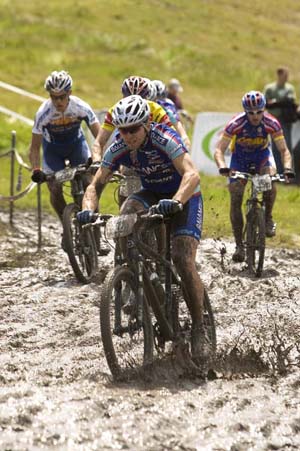
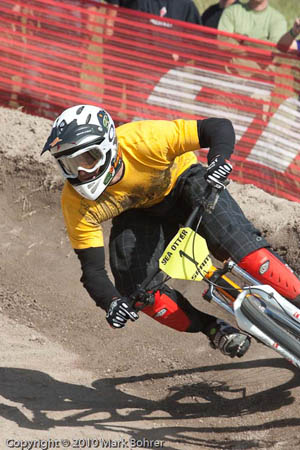
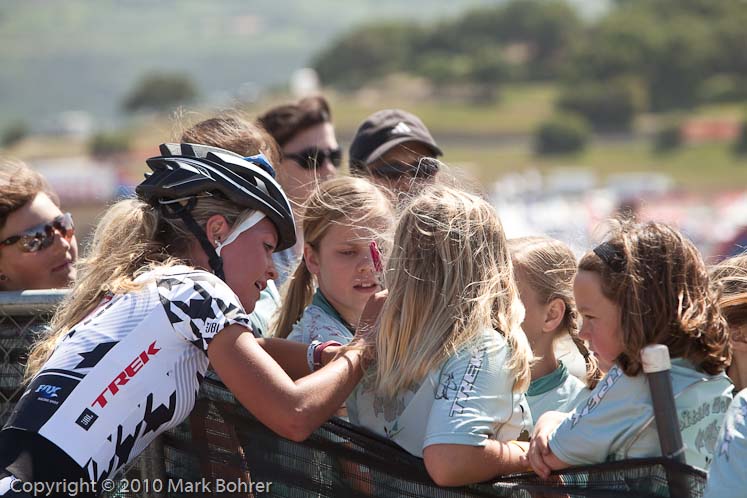
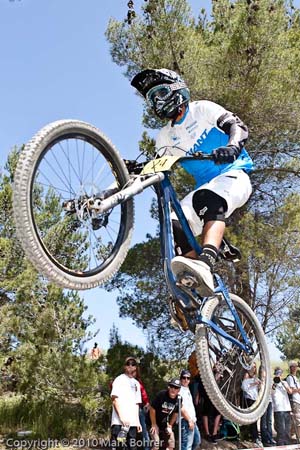
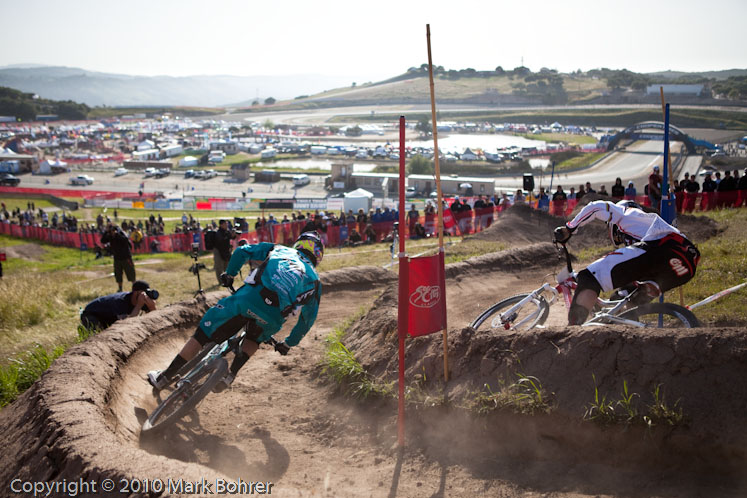
Recent Comments